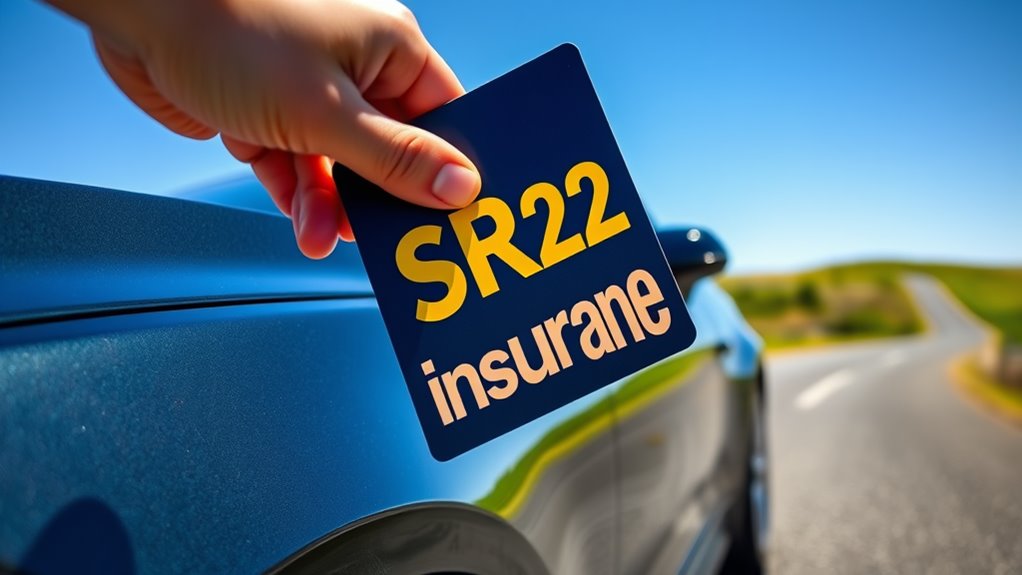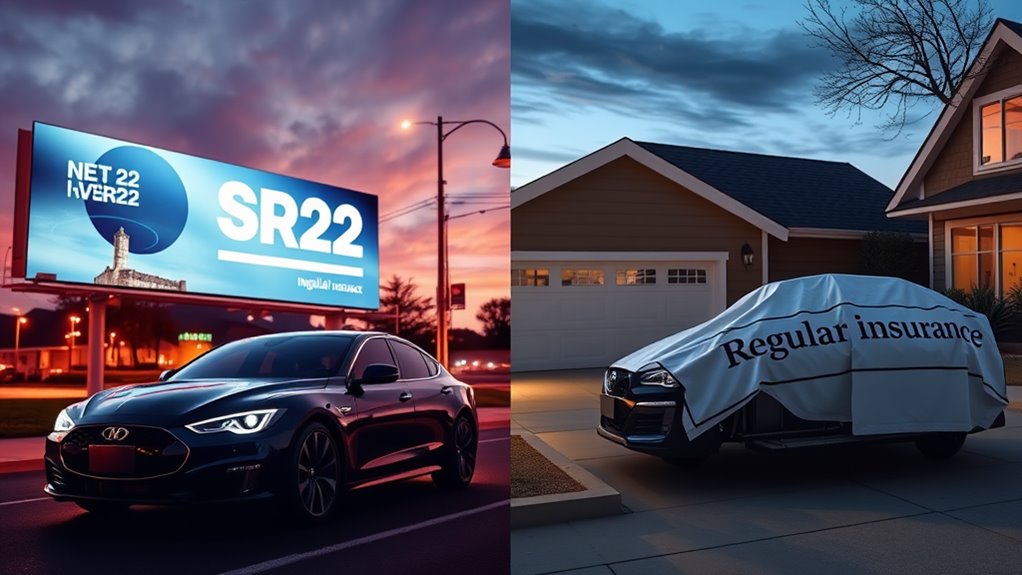What Are the Advantages of SR22 Insurance?
If you've faced serious driving violations, you might find SR22 insurance beneficial. It not only helps reinstate your suspended license but also guarantees you meet state liability coverage requirements. Plus, if you don't own a vehicle, non-owner SR22 policies provide flexibility. By demonstrating compliance with insurance laws, you could access more affordable coverage options. But how does this impact your long-term insurance rates and choices? Let's explore the nuances further.
When you find yourself classified as a high-risk driver due to serious violations like a DUI, obtaining SR22 insurance can be an important step in regaining your driving privileges. It's essential to understand that an SR22 isn't an insurance policy itself; rather, it's a certificate that proves you have the required liability coverage. This certificate is filed with your state's Department of Motor Vehicles (DMV) by your insurance company, which often charges a fee for this service. The requirement typically lasts for about three years, depending on your state's regulations.
One of the primary advantages of an SR22 is that it allows you to reinstate your suspended license. After a serious violation, your driving privileges may be put on hold, making it difficult to commute to work or manage daily tasks. By obtaining an SR22, you demonstrate compliance with state insurance laws, enabling you to regain your license and drive legally again. Additionally, there are non-owner SR22 policies available for individuals who don't own a vehicle but still need to meet the state's requirements. These affordable SR-22 insurance options can help you secure the necessary coverage without breaking the bank.
Obtaining an SR22 allows you to reinstate your suspended license and comply with state insurance laws, enabling legal driving again.
However, it's important to recognize that while SR22 can help you restore your driving privileges, it also comes with financial implications. As a high-risk driver, your insurance premiums will likely increase markedly compared to standard rates. This is due to the heightened risk associated with your driving history. You may also face filing fees, usually around $25, depending on your state and insurer. To mitigate these costs, it's wise to shop around and compare different insurance providers. Some companies may offer discounts if you switch insurers, allowing you to find more affordable SR22 rates.
Moreover, maintaining continuous SR22 coverage is essential to avoid penalties, including potential license suspension. Insurance companies are required to notify the DMV if there's a lapse in your policy. If you fail to keep your coverage active, you could face severe consequences, making compliance not just important, but necessary for your legal driving status. This certificate guarantees that you meet the minimum liability coverage required by your state, helping you stay on the right side of the law.
For high-risk drivers, SR22 insurance offers a pathway to rehabilitation. By fulfilling the SR22 requirement, you're taking proactive steps to improve your driving record over time. Successfully completing this requirement can even lower your insurance rates in the future, as your risk classification may improve. In cases where a restricted license is needed, an SR22 might be a prerequisite, further emphasizing its role in enhancing your driving history.
Lastly, keep in mind that regulations around SR22 can vary greatly from state to state. Some states mightn't require an SR22 but instead have alternative forms like FR44 for specific offenses. It's vital to stay informed about your state's requirements and maintain compliance to avoid further penalties.
Conclusion
To summarize, SR22 insurance offers essential benefits for drivers looking to regain their road privileges and meet state requirements. Significantly, about 20% of drivers with serious violations see their insurance rates decrease after maintaining an SR22 policy for a year, thanks to improved risk profiles. By adhering to state laws and demonstrating responsible driving habits, you not only secure your license but also open the door to better coverage options and potential discounts in the future.

